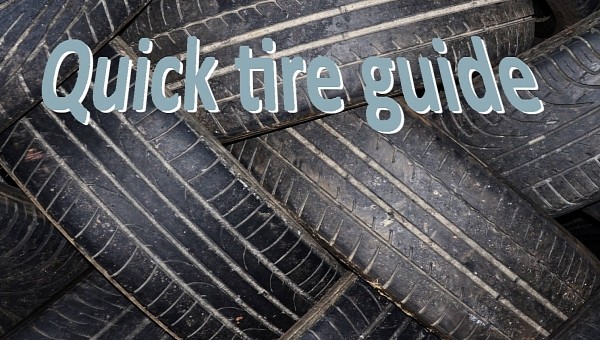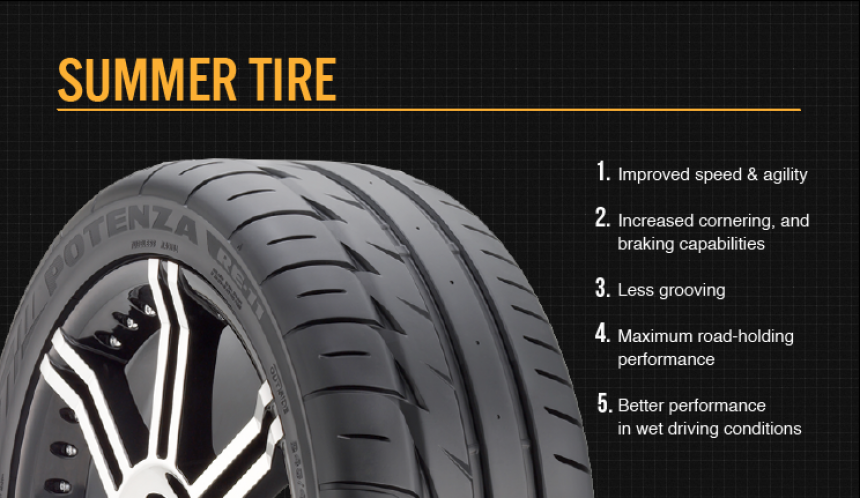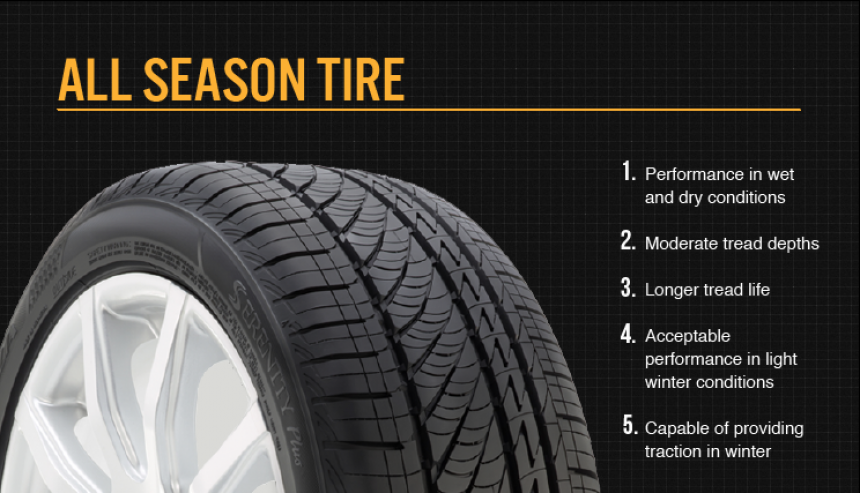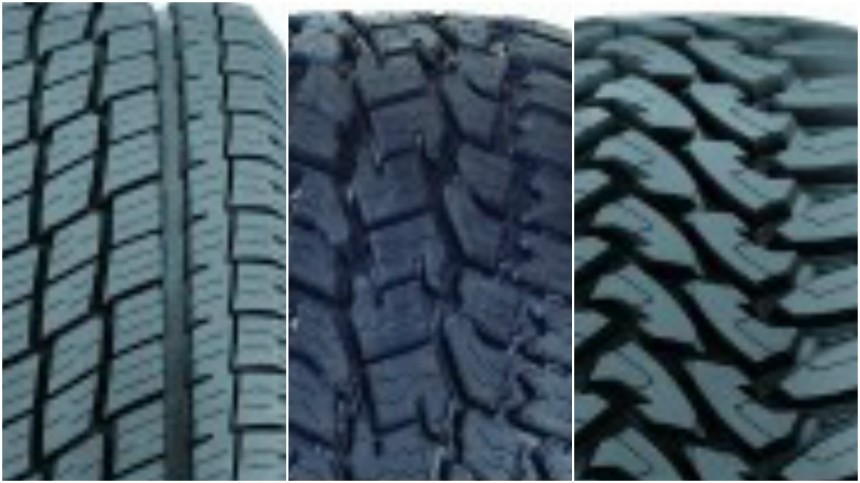When tires were invented over a century ago, customers only had a few choices, and cars were not that demanding. But still, these rubber elements couldn't last too long. Fast forward to these days, and there are hundreds of tire brands and more expectations from them.
Buying the best tire for your buck might get you tire-d. But don't get lost; never pick some random set just to call it a day and move on. After all, you have to keep in mind that regardless of the car's safety systems, it is the tire that keeps your vehicle on the road. You also have to know that there is no one-size-fits-all solution for this. So, when looking for your next set of fresh rubbers, you must begin with a few essential data.
First, you need to look for the tire size. Then, where do you intend to use it, and what's the average temperature in that area. You also need to know the vehicle's weight and performance. Only after that, think about a budget you should fit in. As always, never go for the cheapest solution. Unless you want to sell the car with brand new tires on it and keep in mind that buying the most expensive ones might not bring you the best solution.
Tires are labeled under three main criteria to make things easier for customers, depending on the continent. Thus, in the U.S., these are tread wear rating, traction, and fuel efficiency. In Europe, on the other hand, these are marked for fuel efficiency, braking on wet surfaces (or traction), and noise. If you ask me, wear is much more important than noise, but no judging here!
The grades for these factors are AA, A, B, and C by the U.S. standards, and from A to G in Europe, where the last letters are the worst options on both continents. As for the wear, aim for the highest possible number.
The load index is also essential. If you get a cheaper set of rubbers for your car, with the correct dimensions, but your vehicle is heavier than what those tires are made for, you can get into big trouble. The load index ranges between 71 to 110 and corresponds to a supported weight between 761 lbs (345 kg) and 2337 lbs (1060 kg), respectively. Divide your vehicle's maximum weight by four (or six, depending on how many wheels your ride has), and you'll find a value. That value has to be equal to or lower than the one from the tire rating specification.
Summer tires' compound is made to perform best at temperatures above 50 degrees Fahrenheit (10 degrees Celsius). During the cold season, even if the roads are dry, they become stiffer, and thus the footprint will be smaller than in warmer conditions. In addition, they will start to freeze and crack. So don't use them below those temperatures.
Winter tires, as their name suggests, perform best below 50 degrees Fahrenheit. Still, they can do their job well up to 62 degrees Fahrenheit (17 degrees Celsius). Their compound will make them softer at higher temperatures, leading to increased wear and loss of traction. In addition, the tread pattern is designed to quickly evacuate water and snow; for that, it needs deeper and wider grooves than on a summer tire. Thus, their footprint is smaller.
All-season tires are sometimes better than winter and summer tires while braking at above-freezing temperatures and below 50 degrees Fahrenheit. So these are adequate in the Fall and Spring for commuting in the mornings and late evenings.
But if you want to go across difficult off-road trials, then you must go for an M/T (Mud/Traction) tire. An A/T tire will just make you look silly and struggle for grip all the time. But pay attention to the load index and temperatures. Most M/Ts are unsuitable for hard snow or ice, although they might perform well on deep snow. You should get a set of these if you own a highly modified Jeep Wrangler Rubicon.
As a rule of thumb, I always went for the best possible traction grade, then for the wear factor, which contradicts each other since a low-resistance tire is meant to last longer but offers a lower grip. Still, you can find a balance according to your driving style and yearly mileage, but I never bought a B-rated one for traction. In the third place, I put the fuel efficiency and lastly the price.
Following this judgment, I always ended up with either medium or premium tires, but they never disappointed me.
First, you need to look for the tire size. Then, where do you intend to use it, and what's the average temperature in that area. You also need to know the vehicle's weight and performance. Only after that, think about a budget you should fit in. As always, never go for the cheapest solution. Unless you want to sell the car with brand new tires on it and keep in mind that buying the most expensive ones might not bring you the best solution.
Tires are labeled under three main criteria to make things easier for customers, depending on the continent. Thus, in the U.S., these are tread wear rating, traction, and fuel efficiency. In Europe, on the other hand, these are marked for fuel efficiency, braking on wet surfaces (or traction), and noise. If you ask me, wear is much more important than noise, but no judging here!
The grades for these factors are AA, A, B, and C by the U.S. standards, and from A to G in Europe, where the last letters are the worst options on both continents. As for the wear, aim for the highest possible number.
Season or all-season tires
Many automakers are delivering new cars with all-season tires. These are like those pair of sneakers that works best during hot summer days, in downpour rain, and three-foot-deep snow. What? Have you never heard about something like that? Well, that's because they don't exist. And that's why these tires are not performing best in any conditions. While they are better while driving on snow than summer tires and also better during summer than winter tires, they are worse than dedicated ones in the appropriate season.Summer tires' compound is made to perform best at temperatures above 50 degrees Fahrenheit (10 degrees Celsius). During the cold season, even if the roads are dry, they become stiffer, and thus the footprint will be smaller than in warmer conditions. In addition, they will start to freeze and crack. So don't use them below those temperatures.
Winter tires, as their name suggests, perform best below 50 degrees Fahrenheit. Still, they can do their job well up to 62 degrees Fahrenheit (17 degrees Celsius). Their compound will make them softer at higher temperatures, leading to increased wear and loss of traction. In addition, the tread pattern is designed to quickly evacuate water and snow; for that, it needs deeper and wider grooves than on a summer tire. Thus, their footprint is smaller.
All-Terrain A/T or M/T Tires
These are mainly used for SUVs and crossover vehicles. But don't get fooled; many of these A/Ts are suitable only on asphalt or dry gravel roads. Therefore, these are highly recommended for cars such as Subaru Outback. But only some of these will be able to find traction if you find yourself in a soft off-road situation, especially if it's raining. So, if such a tire doesn't have wide and deep grooves, they're not suitable for such situations. On the other hand, an A/T tire with chunky rubber blocks makes a lot of noise on the highway, their brake performance on dry pavement is poor, and some are unsuitable for winter.But if you want to go across difficult off-road trials, then you must go for an M/T (Mud/Traction) tire. An A/T tire will just make you look silly and struggle for grip all the time. But pay attention to the load index and temperatures. Most M/Ts are unsuitable for hard snow or ice, although they might perform well on deep snow. You should get a set of these if you own a highly modified Jeep Wrangler Rubicon.
Budget, medium, or premium tires
Like most other categories of products on the market, there are options for different budgets. Sometimes you are paying just for the brand without getting a noticeable advantage back, while other times, you might find a top-spec product but without spending an arm and a leg for it. It's the same with the tires. So that's why you should rely on the tire's grades.Following this judgment, I always ended up with either medium or premium tires, but they never disappointed me.








